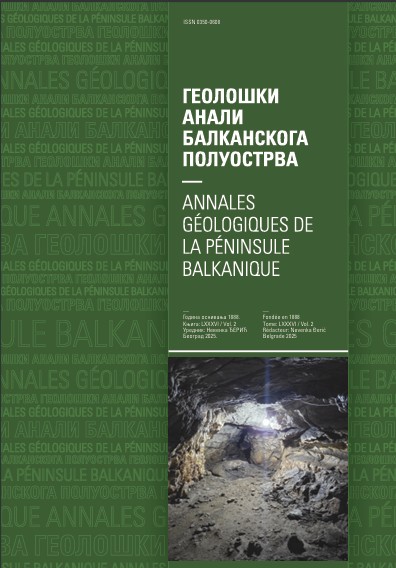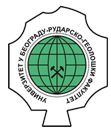The birth of the Sava Suture Zone: The early geological observations and the context of bimodal magmatism (southern Belgrade outskirts; Anđelković, 1973)
Abstract
This paper presents one of the significant results of the research of Prof. Dr. Milodrag Anđelković. The study underlines the first field record providing the evidence of the Upper Cretaceous bimodal magmatism that evetually led towards the definition of the Late Cretaceous “Sava–Vardar Zone” in 2002 (PAMIĆ, 2002). Currently, the 20-years old “Sava–Vardar Zone” i.e., the Sava Suture Zone regarded as a crustal assembly formerly intervening the amalgamated Adria and south Eurasian affinities. The pioneering field mapping-based observations contributing the debuted Sava Suture Zone, are in the underestimated report of Prof. Dr. Milodrag Anđelković, presenting his observations of the typifying Late Cretaceous bimodal magmatism (published in 1973 in the regional XIX-century established journal „Annales geologiques de la peninsule Balkanique”; Title: “Геологија мезозоика околине Београда”, translated: The geology of Mesozoic assembly: vicinity of the Belgrade area). in that time, during early 1970’s, the entire geoscience community of former Yugoslavia for a long time denying any Late Cretaceous magmatism within the Vardar Zone, offering a counterargument grounded onto the geosyncline tectonic framework. The 1973 paper was published much prior the constraints on the Late Cretaceous bimodal magmatic intrusions, discussed as the “Peri Adriatic Sava magmatic arc” or Peri Adriatic Lineament, but only three decades later. The Anđelković’s 1973 report represents the first published record, interpreting a number of the Late Cretaceous bimodal magmatic mini-occurrences distributed in the modern-day Sava Suture Zone belt. Despite using the previous tectonic model, the often-neglected descriptions of the Jurassic–Late Cretaceous biostratigraphy and their spatial relationship with the confined magmatic entities, allow the important correlation of a number of Late Cretaceous smallscale basins, positioned to the northwest(Bosnia & Herzegovina, Croatia), and to the south of Belgrade (Central Serbia, North Macedonia). The understanding of this suture zone, bending in the vicinity of Belgrade, is of primary importance, providing the characterization of the terminal Alpine collisional mechanism in the area.
Copyright (c) 2022 Geološki anali Balkanskoga poluostrva

This work is licensed under a Creative Commons Attribution 4.0 International License.










